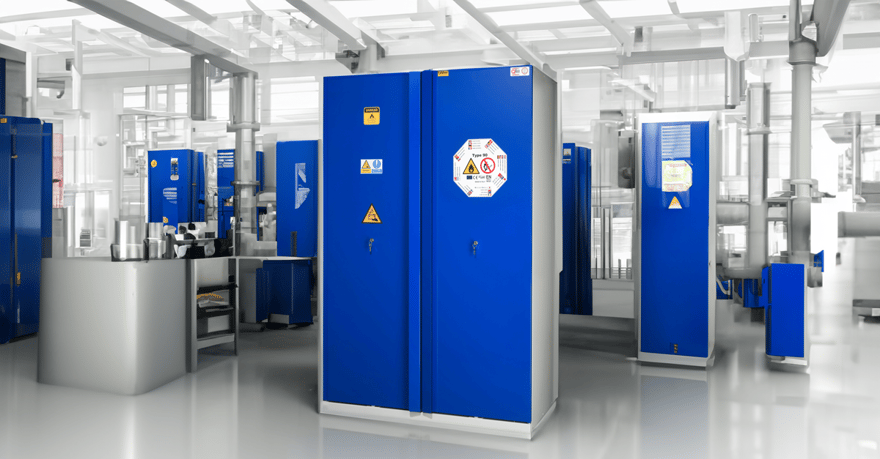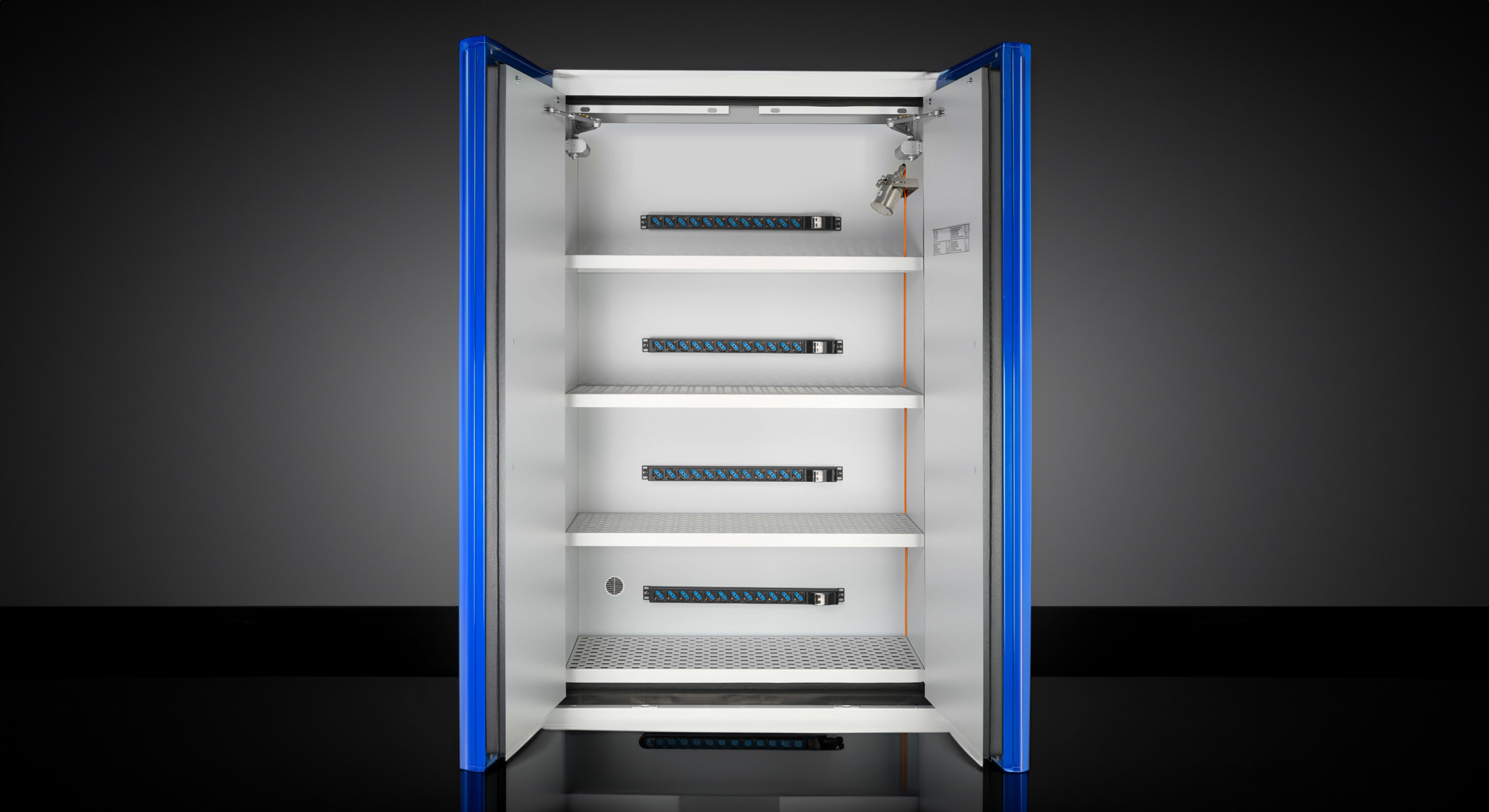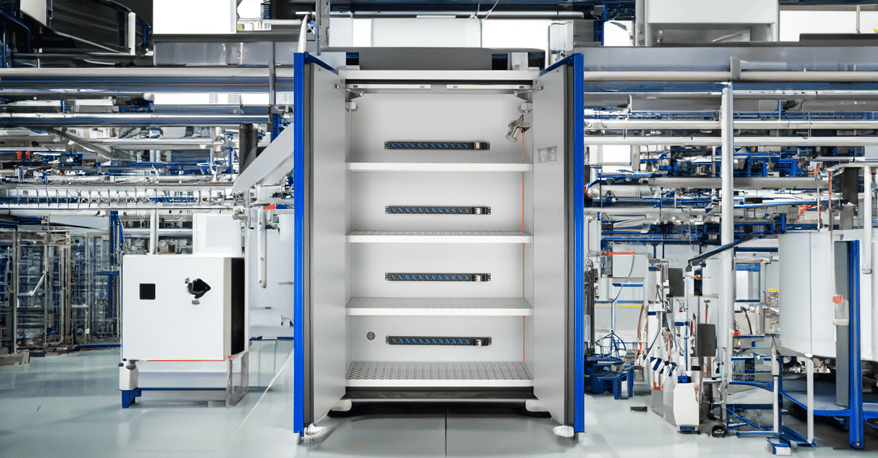Lithium batteries have become a mainstay in our technological society, powering everything from our mobile phones and laptops to electric vehicles. However, despite their wide use, the hazards associated with lithium batteries - particularly during storage - can be substantial if not properly managed. Lithium batteries, when improperly stored, can lead to fires, explosions, toxic gas releases, and other risks to health and safety.
If you're interested in learning about how to manage and mitigate these risks, then this article is a must-read. We'll take a detailed look at safety measures, such as using safety cabinets certified to EN 14470-1 Type 90, that are crucial in reducing risks associated with lithium battery storage.

The shield against lithium battery risks
Safety should always be at the forefront when dealing with hazardous materials such as lithium batteries. You might ask, "Why specifically safety cabinets certified according to EN 14470-1 Type 90?" These cabinets are indispensable in minimising risks. They are specially designed and equipped to cope with the potential hazards associated with lithium battery storage.
These cabinets can optionally come with features such as FirePro, UNEL 220 V electrical outlets; a smoke heat sensor, an alarm, a dry contact and a control panel. In addition, they are equipped with an automatic shutdown centre, providing optimal fire protection for the rooms they are installed in. If a Li-Ion battery fire occurs, the FirePro active agent is deployed to extinguish the fire and counteract the breakdown products of the electrolyte like Hydrogen Fluoride (HF). This results in the creation of stable compounds like KF and KHF2, preventing the development of extremely combustible gases such as Hydrogen (H2). As a result, the temperature within the containment decreases below the critical point required to maintain thermal runaway.

In the event of a fire within the Quarantine version of the safety cabinet, the integrated system will activate an automatic response to overturn the shelves, thereby allowing the batteries to descend into a specially designed water tank situated at the bottom. Upon immersion, the fire will be promptly extinguished, and the potential risk of subsequent self-combustion, resulting from the chemical reagents present within the batteries, will be effectively neutralised. This safety feature ensures both containment and mitigation of fire-related hazards. This version also comes packed with a water pump and algaeicide.
The Dual Advantage of Proper Lithium Battery Storage
Undoubtedly, adopting these safety measures will protect not only your health and well-being but also your property. Can you imagine losing everything due to an uncontrolled lithium battery fire? Or worse, endangering lives? It's a risk not worth taking. The robust specifications of an EN 14470-1 Type 90 cabinet significantly reduce the risks and therefore help to avoid potential disasters.
Implementing the appropriate safety measures for lithium battery storage can provide peace of mind knowing that you are prepared and protected. The right safety measures can even extend the life of your lithium batteries, providing further benefits beyond safety.
Taking Control of Lithium Battery Risks
Now is the time to take action and ensure you're taking the necessary steps to safely store lithium batteries. Evaluate your current lithium battery storage solution and determine if it meets the safety standards discussed in this article. If you haven't already, consider investing in an EN 14470-1 Type 90 safety cabinet, given its array of safety features and compliance with international safety standards.

Reach out to a professional to ensure proper installation and use. Regular maintenance and checks are just as crucial as the installation itself. Remember, it's always better to be proactive than reactive when it comes to safety.
In conclusion, effectively addressing risks in lithium battery storage is a matter of utmost importance, requiring both knowledge and preparation. By adhering to safety standards and using equipment like the EN 14470-1 Type 90 safety cabinets, you can help ensure the safe storage of lithium batteries and protect both people and property from potential harm.
With these measures in place, you can confidently utilise lithium batteries, enjoying their benefits while effectively mitigating associated risks. After all, safety is never an area to compromise on. Don't wait for a disaster to occur before taking action. Start safeguarding your environment.
See our full range of lithium-ion cabinets here.




